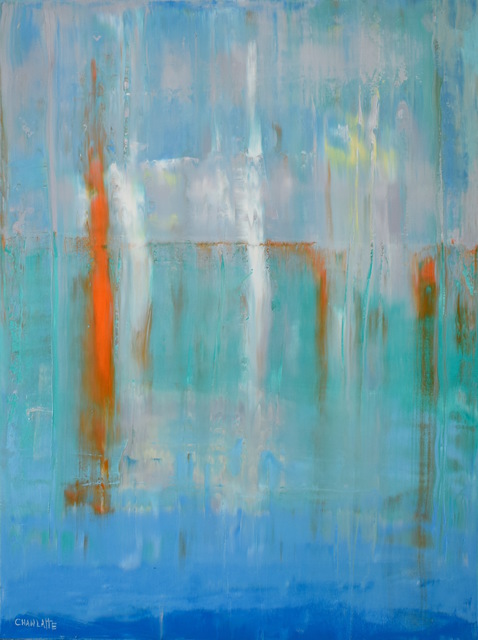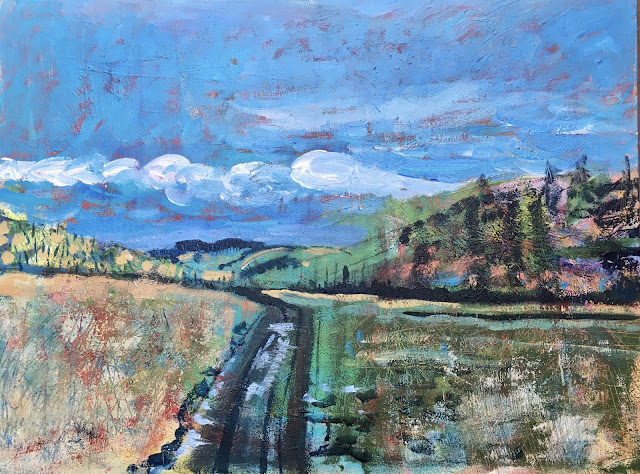We are off to a good start!
Some homework for you:
Tami:
Your goal is to finish some of your paintings, and you chose your river painting. Practice under-painting and over-painting for your river. - try different interesting underpainting colors, and different kinds of brush strokes for over painting.
There are lots of opinions about under painting. I like to have flashes of the underpainting showing through. I often use a complementary color, or a main color from another part of the composition. In my Mt. Pisgah painting (below) I was inspired by the sky in van Gogh's "Women Digging Potatoes" for the red underpainting as well as the brush work in the sky:
Becky:
1. You talked about painting the ocean. Bring a photo of a landscape that means something to you, and be prepared to riff on it in an abstract way. By riffing, I mean it doesn't have to look like a beach or a landscape, but somehow evoke beachiness. Examples:


2. Buy some new tubes of blue, and paint splotches of many different mixtures of blue, taking some notes, and make a list or a chart of colors you like best so you can begin to INTENTIONALLY incorporate them into your work.




Comments
Post a Comment